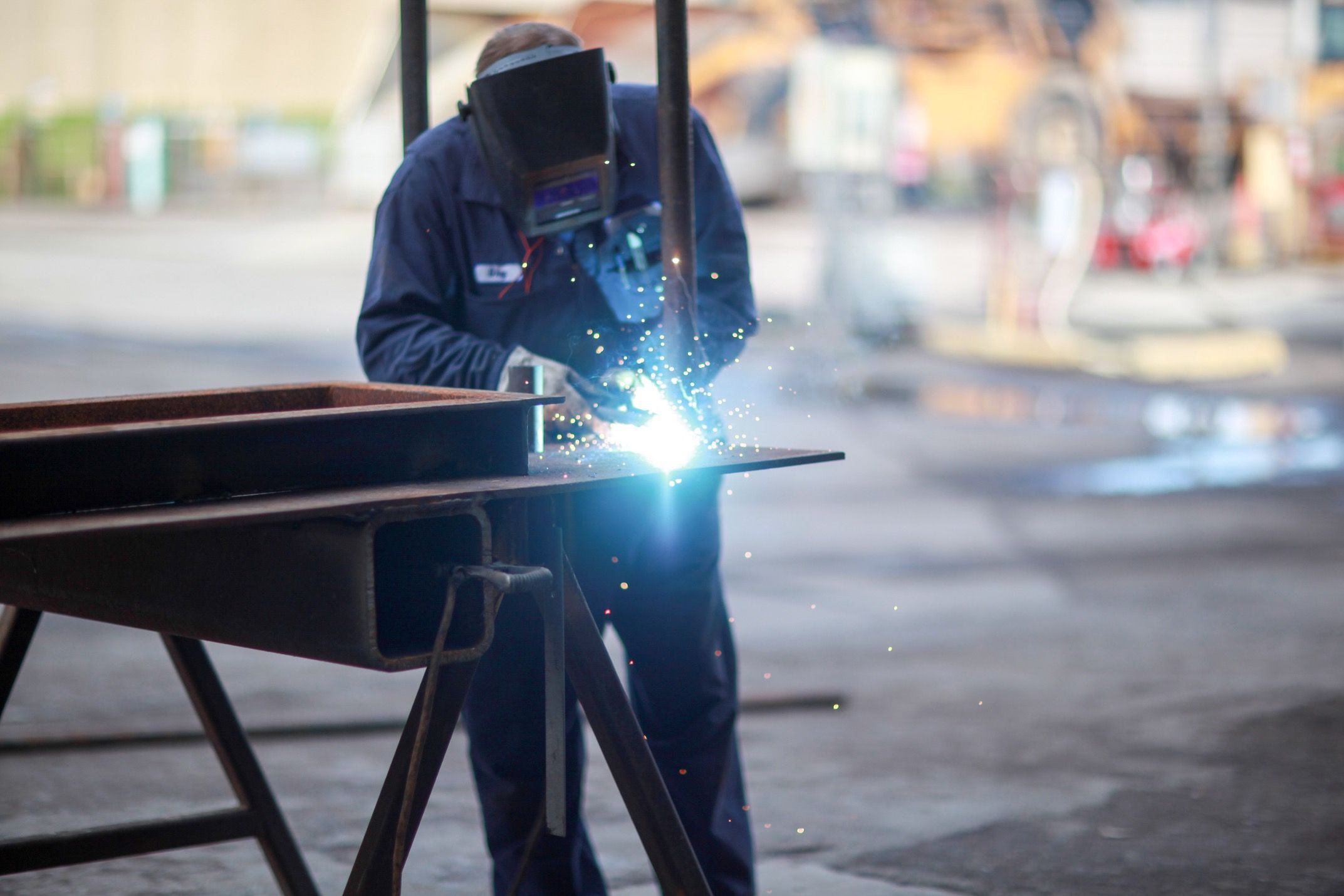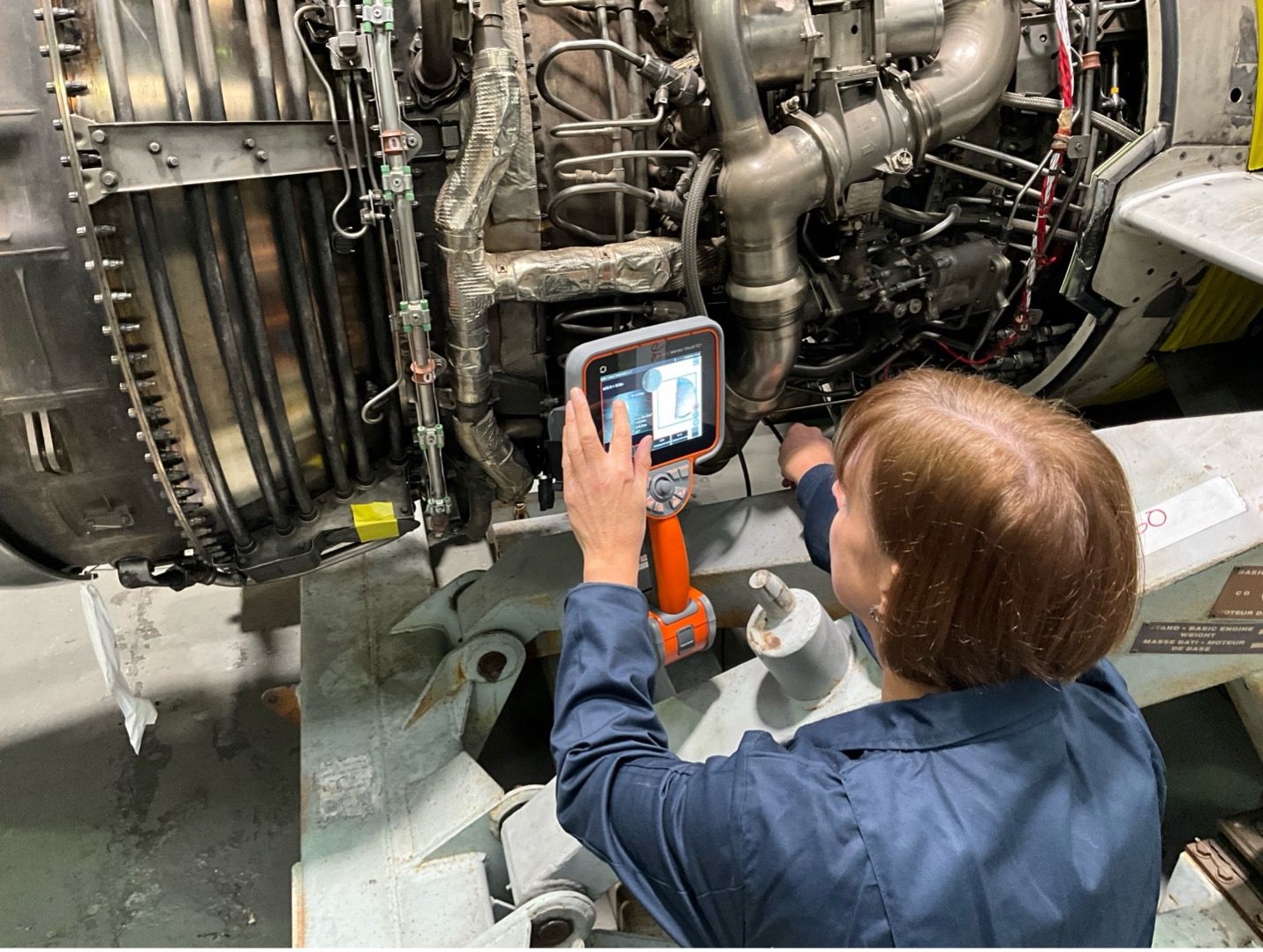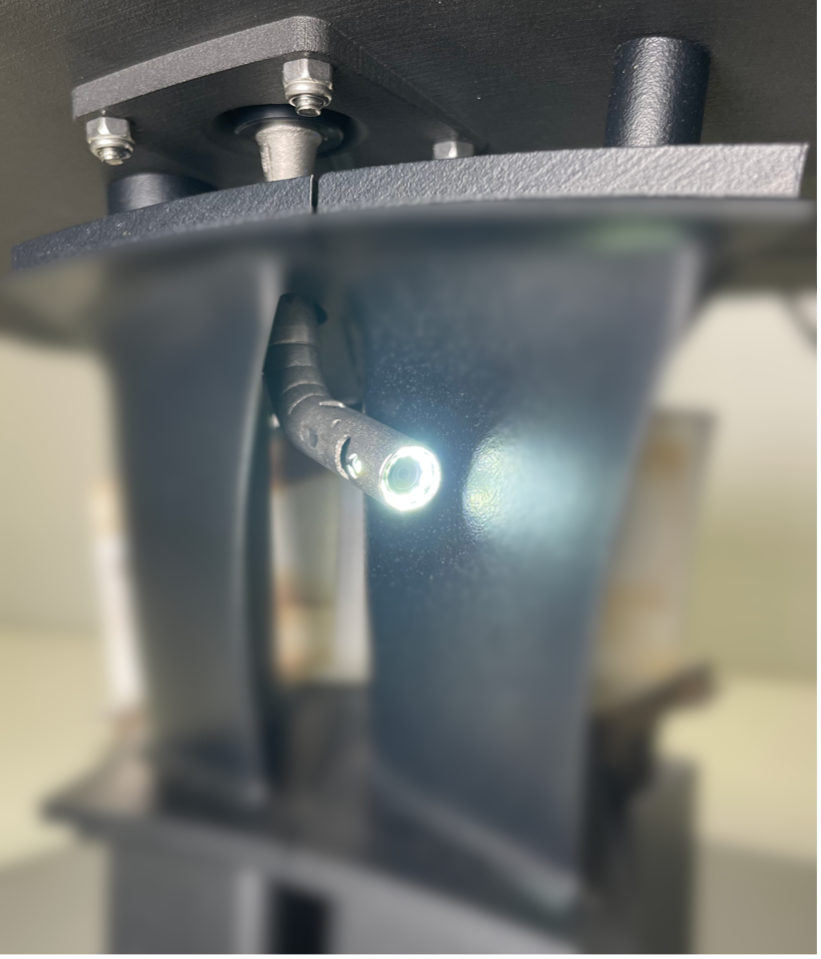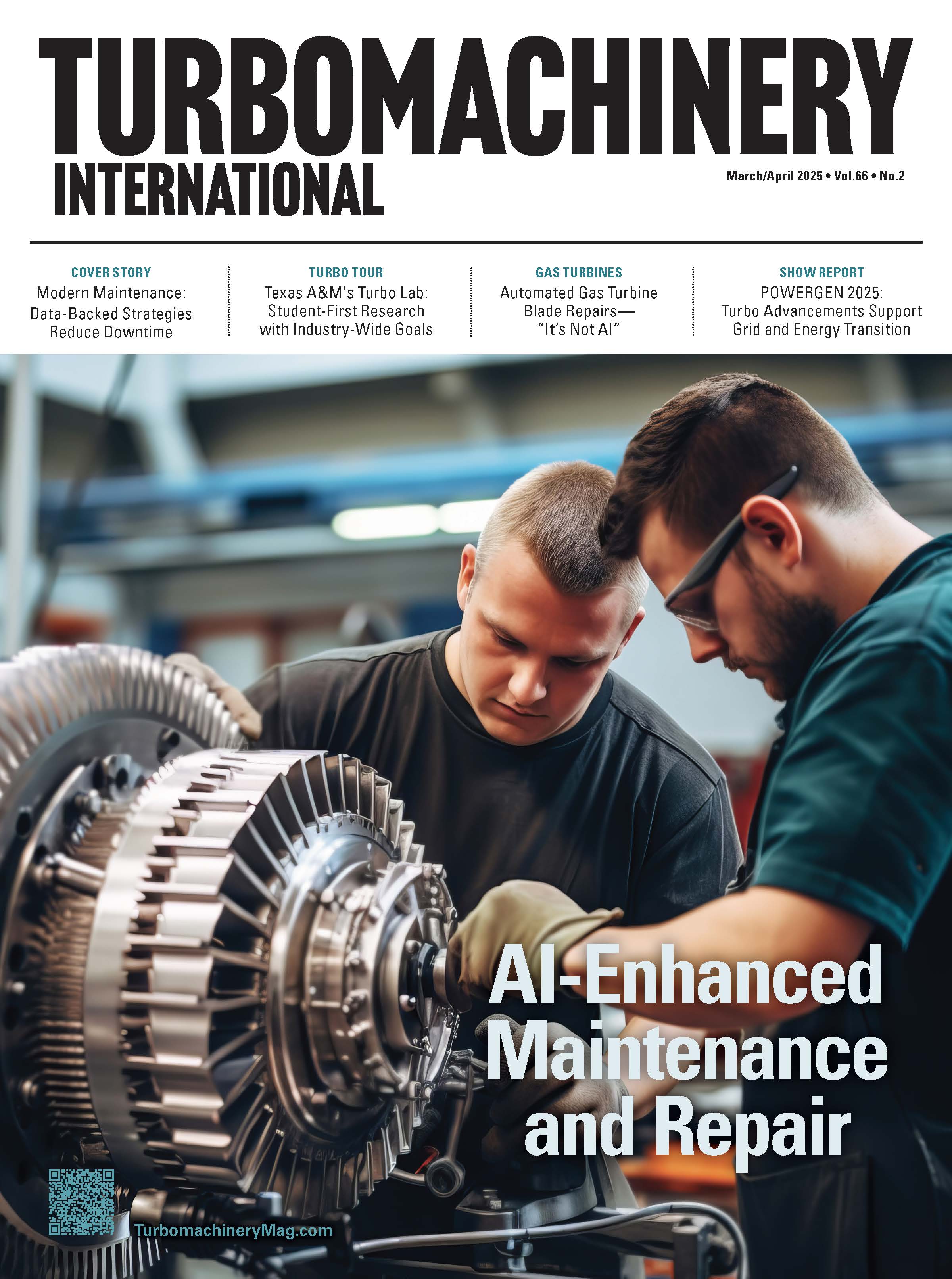Modifying Maintenance: Data-Backed Strategies and Technologies to Reduce Equipment Downtime
Industry leaders are adapting maintenance strategies to incorporate data-driven insights and provide rapid, efficient solutions that keep critical equipment running.
With the global rise of decarbonization initiatives and smart technologies such as artificial intelligence (AI)-enabled monitoring, control, and diagnostics platforms, OEMs and service providers are integrating sustainability, reduced waste, and digitalization into their maintenance and repair strategies. While traditional maintenance methods and service centers will continue to exist, companies are employing more advanced methods once a turbine arrives in shop.
“The turbomachinery maintenance, repair, and overhaul (MRO) market is worth over US$30 billion and is expected to grow significantly in the upcoming decade,” according to Frank Ma, President of JFMA Consulting LLC. He said this is predominantly driven by increasing energy demand, industrial reshoring, and large-scale infrastructure build-out. “These needs are extending the operational life of existing turbomachinery fleets and driving growth for MRO services.”
There’s a growing emphasis on extending maintenance intervals with data-driven, machine-based insights that consider a system’s history. With this in mind, the industry aims to blend traditional in-house maintenance and repair with predictive and preventative strategies.
Credit: IHI Power Services

THE GLOBAL APPROACH & EMERGENCY RESPONSE
Decentralized service and repair setups allow for rapid response times and tailored solutions for each customer’s unique needs. MAN Energy Solutions operates under this idea and incorporates its “service at your doorstep” into its global network of workshops and service centers.
“Since service requirements and scopes vary by case and region, we employ a flexible network approach, which incorporates both local workshops and specialized production facilities,” said Roberto Rubichi, Senior Communications and Marketing Manager, MAN Energy Solutions. This strategy ensures that whether a customer needs routine maintenance or emergency repairs, help is never far away.
The company’s approach includes continuous tracking of changes in materials and designs, comprehensive documentation of machine history, and implementing advanced technologies to enhance machine lifespan and availability. MAN Energy integrates digital technologies with turbomachinery maintenance by utilizing expertise from Competence Centers for Laser Welding, 3D Printing, and 3D Scanning.
When it comes to turbomachinery, downtime can be costly. Companies like MAN Energy and Rotating Machinery Services (RMS) have developed emergency repair services to minimize this impact. MAN Energy offers emergency repairs that adhere to OEM standards, delivered through fast-track solutions and prioritized workflows to ensure that even unexpected issues can be addressed quickly and effectively.
RMS takes a similar approach with its emergency repair service line. “RMS’s technicians and engineers can be dispatched to customer sites within 24 hours, both domestically and internationally,” said John Bartos, CEO of RMS. This rapid response capability is crucial in an industry where every hour of downtime can translate to significant financial losses.
THE ROLE OF TECHNOLOGY
As the industry evolves, so do the tools and techniques used in turbomachinery maintenance. Digitization and data-based maintenance are becoming increasingly important, with companies focusing on providing intelligent service proposals that integrate machine history and predictive behavior.
GE Vernova has taken this a step further with its Live Outage system. “Live Outage is a system of digital applications, tools, sequencing, and other initiatives to transform outages through lean methodology,” said Nathan Race, Services Productivity Leader, Gas Power at GE Vernova. “The system not only improves efficiency but also enhances safety. By using lean management and simplifying our procedures, we put information in the hands of those doing the work, with an increased focus on safety and quality.”
This digital platform replaces traditional paper-based approaches, making best practices scalable and reproducible at sites worldwide.
3D printing and advanced repair techniques are also playing an important role. MAN Energy is advancing repair methods using technologies such as direct energy deposition and laser powder bed fusion. These techniques allow for more precise repairs and can even improve upon original designs.
THE ROLE OF DATA & HUMANS
In the modern era of turbomachinery maintenance, data are paramount, with companies leveraging advanced analytics and management information systems to track maintenance activities and inform decision-making.
IHI Power Services Corp.’s (IPSC) management information system serves as a key enabler of efficient maintenance execution. The system provides centralized data management, workflow automation, performance analytics, and cross-plant insights. This allows for real-time visibility into equipment performance and resource allocation, enabling teams to anticipate issues before they escalate.
EthosEnergy takes a similar data-driven approach to managing parts capacity, “We employ a proprietary modeling system that allows us to project forced outages during a given period and estimate the parts demand for these forced outage scenarios,” said Brian Bigelow, Gas Turbine Product Leader at EthosEnergy. “We use our historical operating data to determine the optimal level of parts inventory, ensuring we are well-prepared to meet our customers’ needs efficiently and effectively.”
Despite the increasing role of technology and data, the human element remains critical in turbomachinery maintenance. Skilled technicians and engineers are the backbone of the industry, bringing expertise and problem-solving skills to each maintenance task.
GE Vernova’s Live Outage system, for example, was developed “… with input from experts from the field and experts in lean methodology to improve the field execution experience by putting the worker first,” said Ryan Finger, Global Director of Software Product Marketing, GE Vernova. “This outage workflow was launched in the United States at over 80 power plants powered by GE Vernova 7F gas turbines, demonstrating safety, quality, and outage duration improvements. As the global deployment continues, Live Outage is now used on GE Vernova 9F gas turbines in Europe and the Middle East.”
Much of the maintenance process for turbomachinery requires precision and expertise by in-house engineers. For example, RMS’s repair and maintenance center in Pearland, Texas, begins this process by disassembling and cleaning, followed by a thorough inspection and assessment. Engineers then develop a repair plan, often looking for ways to improve the machine’s efficiency and reliability. The actual repair work involves tasks such as shaft repairs, blade restoration, and component replacement.
After repairs are complete, the equipment is reassembled and undergoes final quality checks before being shipped back to the customer. This process ensures that each piece of equipment is returned to service in optimal condition.
MAN Energy maintenance kits are designed to support offshore service activities by ensuring the availability of critical tools and parts. This approach maximizes uptime and the duration of onsite work by personnel and offers benefits such as reduced indirect costs and high-priority availability of spare parts.
AI- AND ML-BASED TOOLS
Modern maintenance technologies are increasingly integrated with AI and machine learning (ML) capabilities, collecting and transmitting data faster than ever before. Not only do these tools execute maintenance activities with better efficiency, but they can provide insights that a human operator, technician, or engineer may not catch initially.
Everest Mentor Visual iQ+ (MViQ+), Waygate Technologies’ video borescope, provides advanced measurement and workflow automation for inspections and allows access in hard-to-reach areas. It combines high-resolution image capturing, processing functions, precision optics, and image transformation functions.
“This technology plays a crucial role in industrial inspection across a wide range of applications and can be used with a variety of interchangeable probes and platform configurations,” said Michael Domke, General Manager of Visual at Waygate Technologies, a Baker Hughes business. “To increase data quality while reducing inspection times, it applies computer vision and ML analytics to identify blades and defects within a gas turbine automatically. Its measurement options combine fully surfaced point-cloud visualization and advanced measurement algorithms for more accurate and repeatable measurements.”
MViQ+ engine inspection. Credit: Waygate Technologies

The newest version features an extended battery life and upgraded CPU that simultaneously executes advanced analytics, tools, and features. MViQ+ also standardizes and simplifies inspection processes and reduces mental load using three key features:
- Menu Directed Inspection standardizes inspection processes and data collection requirements so that inspection data across fleets of assets can be readily accessed and compared through InspectionWorks.
- Blade Counter Analytic reduces inspectors’ mental load by keeping track of blades; Gas Power-assist (an assisted defect recognition analytic) provides a second set of eyes and reduces the risk of human error.
- The turning tool integration for aircraft engines simplifies the inspection process by removing one device the inspector needs to interact with during the inspection. (The turning tool controller is redundant when connected to MViQ+.)
Domke explained how features such as voice control and steering enhance user experience. Steering, or articulation systems, allow the inspector to “get to the indication” or navigate the tip of the borescope through the asset to the target location. Integrated voice control allows the inspector to keep both hands on the borescope to navigate through the asset while executing several commands. Adjusting brightness, initiating measurements, and more are available with a straightforward verbal prompt starting with “Hey Mentor, …”. Additionally, the Learn More content is directly embedded into the MViQ+ operating system, offering users convenient access to training materials for further guidance and assistance.
Waygate Technologies and GE Aerospace joined forces to focus on “developing and deploying advanced machine vision analytics to push the boundaries of what is possible in aircraft engine inspections,” Domke said.
…and the new AI-assisted commercial borescope solution was born.
It significantly reduces the time needed to perform high-pressure compressor (HPC) inspections, which are one of the most critical and time-consuming tasks in the engine MRO process.
“The new advancements were part of a recent software update made to Waygate’s Mentor Visual iQ+ video borescope,” said Nicole Jenkins, Chief MRO Engineer at GE Aerospace. “GE Aerospace has plans to introduce the new model to its MRO network for use in HPC inspections for its GEnx and CFM LEAP engines.”
The partnership aims to create solutions for aircraft engine inspections “by integrating advanced machine vision algorithms to detect and classify defects automatically,” Domke said.
The latest version of MViQ+’s Gas Power-assist analytic and turning tool feature is a result of this ongoing collaboration. The new Gas Power-assist model delivered significant benefits over the older version:
- A 33.6% increase in model recall rates improved the identification of HPC defects.
- A 13.5% increase in model precision rates reduced former falsely identified defects. The decreased false positive rate was achieved through a larger training dataset and the temporal smoothing algorithm used for detection confirmation.
AI-ENABLED BLADE INSPECTION TOOLS
What’s established about AI is its ability to speed up processes with precision and accuracy.
“Using AI, we’re able to gather, analyze, and act on critical inspection data much faster and at much greater volumes previously impossible,” Jenkins said. “That’s why at GE Aerospace we prioritize scrutinizing and scrubbing the data to ensure it is trusted and fully transparent.”
She said it uses AI analogous to the healthcare industry: “Doctors leverage AI in key areas like medical diagnosis to help make faster, more informed decisions to treat patients earlier and drive better outcomes. The same is true for inspection engineers when inspecting parts. AI is giving them more valuable data and insights to assess the condition of those parts more rapidly and accurately.”
AI-assisted commercial borescope inspection solution. Credit: GE Aerospace

GE Aerospace’s inspection engineers use an AI-enabled blade inspection tool (BIT) to guide the selection of Stage 1 high-pressure turbine blade images on GEnx commercial engines, “similar to how AI assists doctors with reviewing X-rays of patients to spot lung cancer,” Jenkins said.
The company’s AI-enabled BITs for its CFM LEAP and GE9X engines were patterned after this tool following more than two years of successful use by its customers and MRO shops. “While there is some customization involved with the CFM LEAP and GE9X BIT tools, the use of AI and inspection of blades for these respective engines will be modeled after the GEnx BIT tool,” Jenkins said.
This tool helps technicians create faster, more accurate inspections and reduces parts’ processing time from three to 1.5 hours compared to the standard borescope inspection.
“The reduction in process time really derives from using AI to select the most optimal images for inspection engineers to inspect,” Jenkins said. The inspection engineer no longer needs to search and find these images themselves. The tool also has an easy-to-navigate user interface and image analysis features, allowing inspection engineers to capture key measurements and perform inspections more efficiently. Plus, it provides historical inspection results for the same engine serial number for reference and accurate blade indexing within a specific inspection task for reduced burden on specific blade identification within a set.
THE FUTURE OF MAINTENANCE & SPECIALIZATION
As the industry looks to the future, several trends are emerging in turbomachinery maintenance. Royd Warren, Chief Operations Officer at IPSC, said that many facilities are moving toward “lean operations and maintenance models, reducing onsite staffing and leveraging remote monitoring solutions to enhance efficiency.”
There’s also a growing focus on extending equipment life. “Non-utility owners, in particular, prioritize refurbishing and extending the life of existing assets rather than full replacements,” Warren said. “This tactic places greater emphasis on advanced diagnostics, precision machining, and targeted component upgrades.”
Predictive maintenance is becoming increasingly important. IPSC’s predictive maintenance program incorporates techniques such as vibration monitoring, oil testing, infrared thermography, and motor testing to assess equipment health proactively. Companies can refine service intervals and optimize resource allocation by integrating these methodologies with preventative maintenance schedules.
Many companies have developed specialized facilities to handle specific types of equipment or repairs. EthosEnergy’s Rayong, Thailand workshop, for example, offers extensive repair capabilities on various heavy industrial gas turbine models. The facility handles repairs for components such as engines, buckets, nozzles, and combustion liners and provides specialized services like low temperature epoxy and thermo-mechanical fatigue crack repair.
“Additionally, the facility offers downstream deflection rectification, airfoil coupon replacements, transient phase restoration, brush seal upgrades, and specialized coating configurations for vanes and nozzles,” Bartos said. “For shrouds, Rayong provides air seal replacements and honeycomb upgrades, while combustion components benefit from CLIP upgrades, sectional replacements, and external body coating. The facility is also currently expanding its manufacturing capabilities for parts and rotors.”
These specialized facilities allow companies to provide high-quality, efficient maintenance and repair services, often improving upon original equipment designs.
WHAT'S NEXT?
From advanced digital tools and predictive maintenance techniques to specialized repair facilities and global parts management strategies, companies are constantly adapting to meet the challenges of keeping these machines running.
The future of turbomachinery maintenance lies in integrating advanced technologies with human expertise, global capabilities with local service, and predictive strategies with rapid emergency response. As Race said: “A faster outage means the interval between shutting down a power plant for maintenance work and bringing it back online is shorter and the power plant can go back to producing and selling power more quickly, which benefits our customers.”
In this complex and ever-changing landscape, one thing remains constant: The critical importance of effective turbomachinery maintenance in keeping the lights on worldwide.
